Dill, Anethum graveolens, is a biennial herb, usually grown as an annual. It has delicate, aromatic foliage, and large umbels with bright yellow flowers.
Suitable for gardeners in USDA Hardiness Zones 3-9, there are a number of different varieties available that vary in size, time to maturity, and flavor.
Its feathery foliage and delicate flowers make a decorative, fragrant addition to borders.
It’s often grown as a companion plant in the vegetable garden.
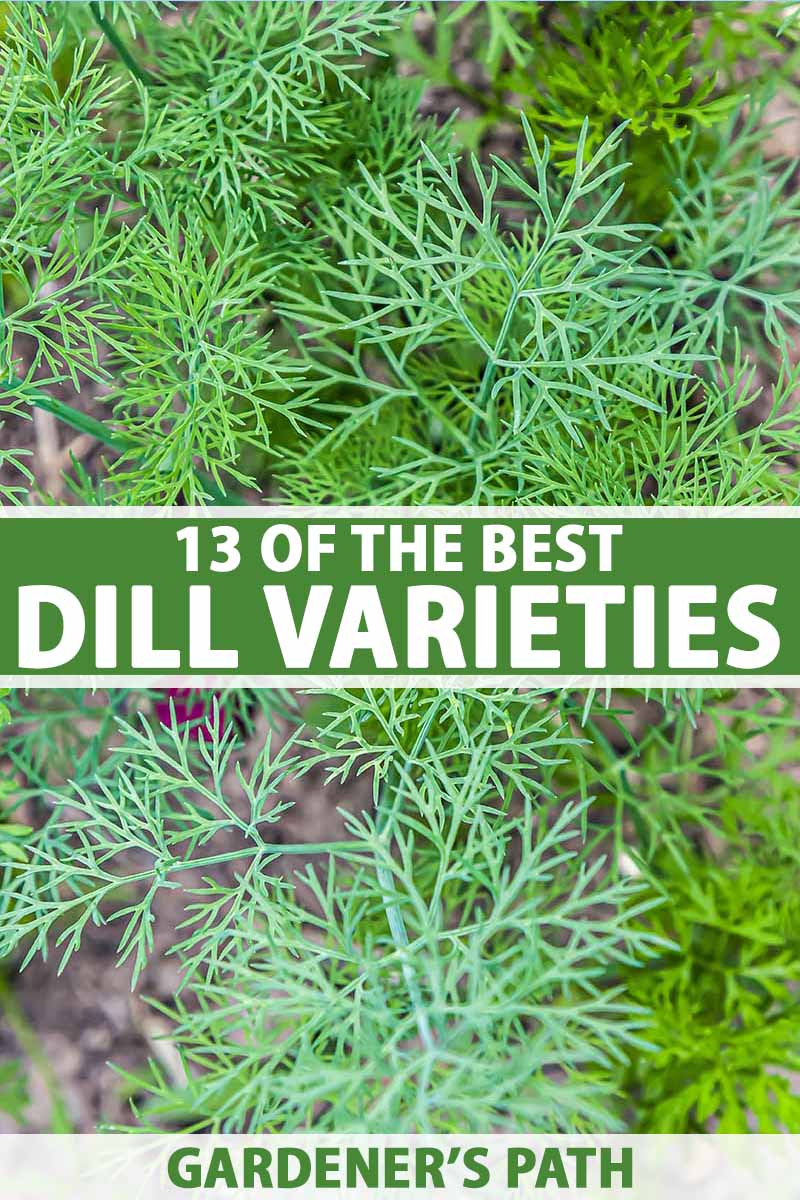
We link to vendors to help you find relevant products. If you buy from one of our links, we may earn a commission.
Every variety is flavorful and can be used for those classic dill recipes like pickling, as a topping for fish, or in potato salad. Some are more suitable for container growing, and others go to seed earlier, ideal for use in cut flower arrangements.
Check out our guide to learn more about how to grow dill in your garden.
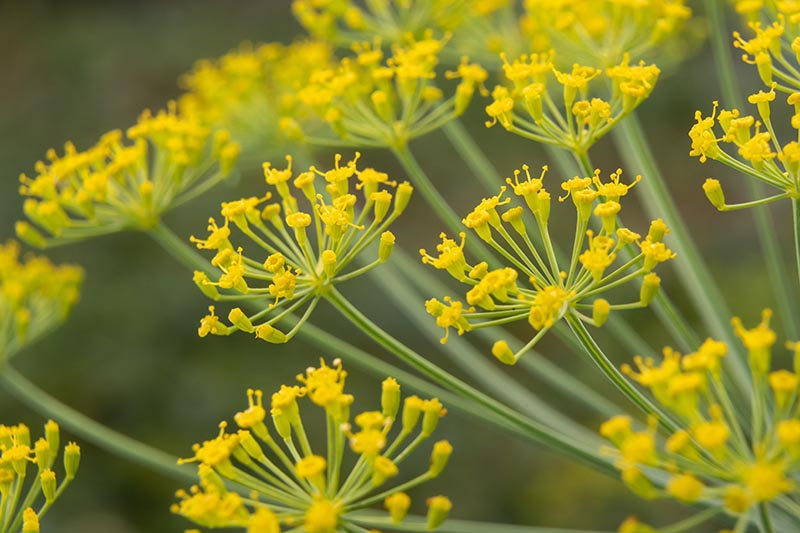
This member of the Apiaceae family enjoys moist, fertile soil, and is best sown in spring, as hot and dry weather can cause it to bolt.
In this article, I’m going to share 13 of my favorite varieties of A. graveolens, so you can choose yours!
Here’s what I’ll cover:
13 Dill Varieties for Your Herb Garden
Before we jump in, let’s quickly clarify our terms:
Dill weed is the phrase people use to describe the leafy parts of the plant, whereas dill usually refers to the entire plant.
Ready to get started?
1. Bouquet
This variety gets its name because it’s often used in cut flower bouquets, thanks to its tall stems and big, showy umbels of bright yellow flowers.
It features beautiful dark-= green foliage, which makes it ideal if you want an ornamental plant for your garden that is also edible.
In other words, this dill does it all. Perhaps that’s why it’s one of the most commonly grown types.
If you want to make pickles, this is an exceptional option thanks to its abundant seeds. It’s also frequently used for making a soothing tea.
‘Bouquet’ grows up to the feet tall at maturity, and the leaves are ready for harvest in 40-60 days.
It’s quick to flower – in only 85-100 days, which is good or bad depending on your goals, since flowering means the leaves will start to die back and lose their appealing flavor.
You can find seeds in a variety of packet sizes available at True Leaf Market.
2. Compatto
‘Compatto’ is a compact variety with blue-green foliage and a bold, aromatic taste.
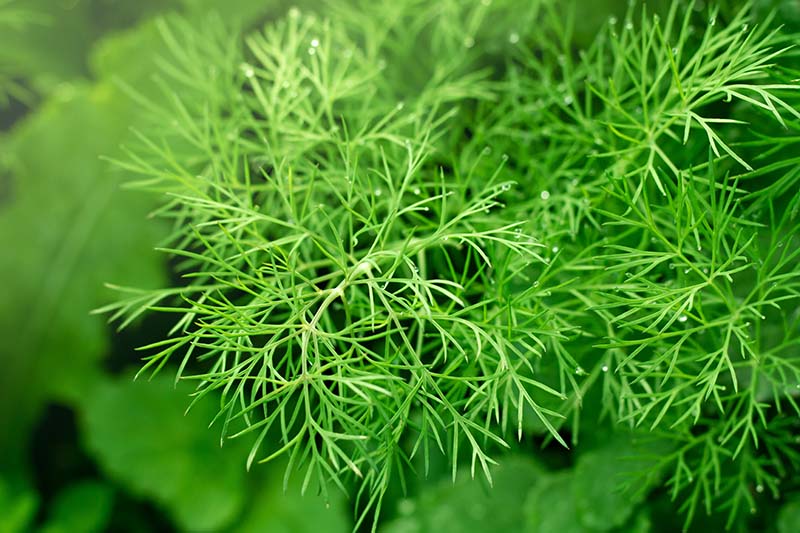
It grows to a diminutive 12-18 inches tall at maturity, and is slow to bolt. Plants are somewhat drought and heat tolerant.
Leaves are ready to harvest in just 40-50 days. It’s the perfect size if you’re looking for a container herb.
3. Delikat
‘Delikat’ has abundant, thick, dense foliage. It’s a reliable producer, and has a heavy leaf and seed yields compared to other dill varieties.
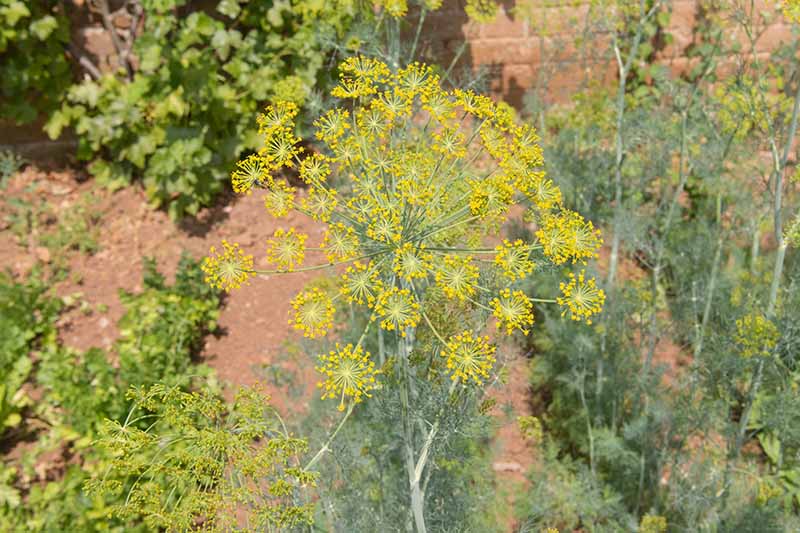
It grows about 10-24 inches tall at maturity and foliage is ready to harvest in about 40 days, with seeds maturing in 90 days.
4. Dukat
‘Dukat’ dill, also known as ‘Tetra,’ is a Danish variety that is slower to bolt than other types. With an intense flavor, it’s a good option if your primary goal is to harvest the leaves for cooking.
‘Dukat’ has a high oil content, which makes it especially aromatic and flavorful.
This variety tops out at about one to two feet tall at maturity, which makes it ideal for growing in a container.
The leaves are ready for harvest in 40-50 days, and the seeds are good to go in about 90-100 days.
You can find seeds in a variety of packet sizes available at Eden Brothers.
5. Elephant
‘Elephant’ is a late-flowering cultivar that’s slow to bolt – so you can get in a longer season of clipping the dark green leaves.
Mild-flavored leaves mature in between 60-90 days, and seeds are ready at 110-140 days.
With a mature height of four feet tall and a spread of two feet, ‘Elephant’ can be planted in borders or raised garden beds.
Find seeds in a variety of packet sizes available at Eden Brothers.
6. Fernleaf
A winner of the All-America Selections award in 1992, ‘Fernleaf’ matures to a petite 18 inches tall, with a compact growth habit. It’s ideal for growing in a container or a small herb garden.
The leaves, as you might have guessed, have a bushy fern-like appearance. I love to use them in flower bouquets as a filler because not only are they pretty, they have that incredible dill scent as well.
‘Fernleaf’ also makes a beautiful specimen plant in the ornamental garden, or it is suited to growing in a container indoors.
After cutting, the leaves retain their flavor for longer than some other varieties. ‘Fernleaf’ is ready to harvest in 40-60 days for the leaves, and 90-100 days for the seeds.
Find seeds in a variety of packet sizes at True Leaf Market.
7. Greensleeves
‘Greensleeves,’ sometimes referred to with the alternate spelling ‘Green Sleeves,’ is resistant to bolting and produces an abundance of dark green leaves with a sweet, mild flavor.
It grows to a relatively compact height of 30 inches tall, and has a long harvest window. Suitable for growing in containers, you can harvest the leaves in 45 days.
Seeds mature in about 100 days.
8. Hera
‘Hera’ is slow to bolt and has dark green, almost blue leaves. Considered a “bunching” variety, fragrant leaves mature in 40-60 days, and the seeds are ready 50 days later.
Growing to a compact size of 12-18 inches at maturity, ‘Hera’ works well for container growing.
Find seeds in packets of 400, available at Burpee.
9. Herkules
‘Herkules,’ also known as ‘Hercules,’ grows to an impressive three feet tall at maturity, with lots of long, arching leaves.
It produces massive flower heads and is slow to bolt. The downside is that the older leaves tend to lose some flavor, and you may need to stake it because of its height.
This is a great option if you want to attract beneficial insects like bees and butterflies.
Pluck the leaves after 40-60 days. The seeds are mature in between 90 and 100 days.
You can find packets of 400 seeds available at Burpee.
10. Mammoth Long Island
‘Mammoth Long Island,’ aka ‘Mammoth’ or just ‘Long Island’ dill, is a large cultivar.
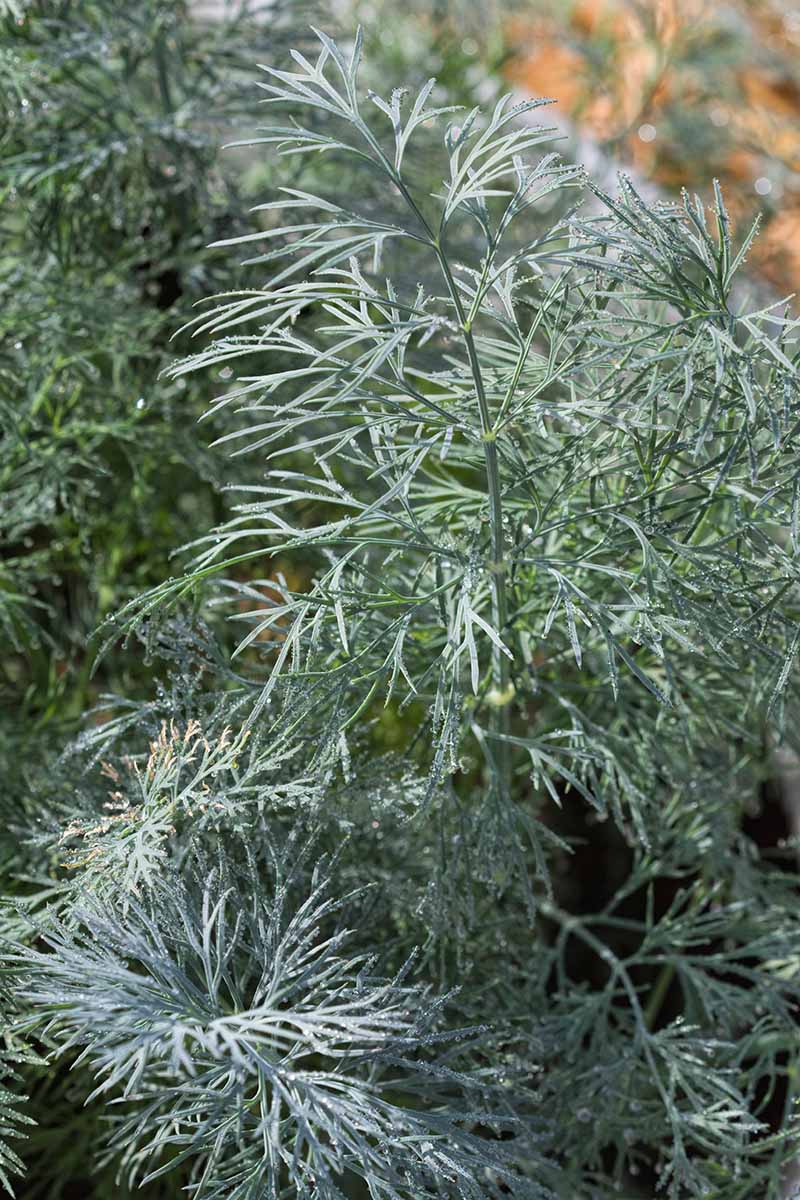
It averages about three feet tall, but in the right conditions, it can grow up to six feet tall at maturity.
It’s popular for its large, flavorful leaves that are perfect for chopping up and sprinkling on fish. Because of its large size, this variety may require staking.
The leaves are ready to harvest after just 65 days, and the seeds are ripe around 110 days after planting.
You can find seeds in a variety of packet sizes at True Leaf Market.
11. Superdukat
‘Superdukat’ is a heavy producer that is slow to flower. I’ve harvested this variety for three straight months, with no need for succession sowing.
Its abundant foliage has a high oil content, for an intensely aromatic flavor.
‘Superdukat’ can grow up to five feet tall at maturity. Plants tend to grow uniformly and quite straight, and stems may need staking.
It takes 40-50 days to reach leaf harvest, and 90-100 days for seed harvest.
12. Teddy
‘Teddy’ grows fast, with dense foliage in an upright form. This cultivar has thicker leaves than the typically fine, delicate ones you see on other dill plants.
A dwarf variety, ‘Teddy’ is a good candidate for container growing.
The leaves are ready in 45-55 days and the seeds can be harvested in between 95 and 115 days.
13. Vierling
‘Vierling’ is an heirloom variety with dark blue leaves and thick stems. It is slow to bolt.
The seed heads are popular with commercial florists for use in cut flower arrangements. In the garden, it attracts beneficial insects and pollinators.
‘Vierling’ tops out at about 36-60 inches tall at maturity.

This dill weed is ready to harvest in 45 days, and the seeds are good to go in 95 days.
You can find seeds available in capsules, to store in the freezer prior to planting, from Frozen Seed Capsules via Amazon.
There’s a Dill Out There For Everyone
I adore dill, not least because it’s so versatile. To liven up bouquets, as an ingredient cooking, as a calming tea, to flavor pickling liquid… dill can do it all.
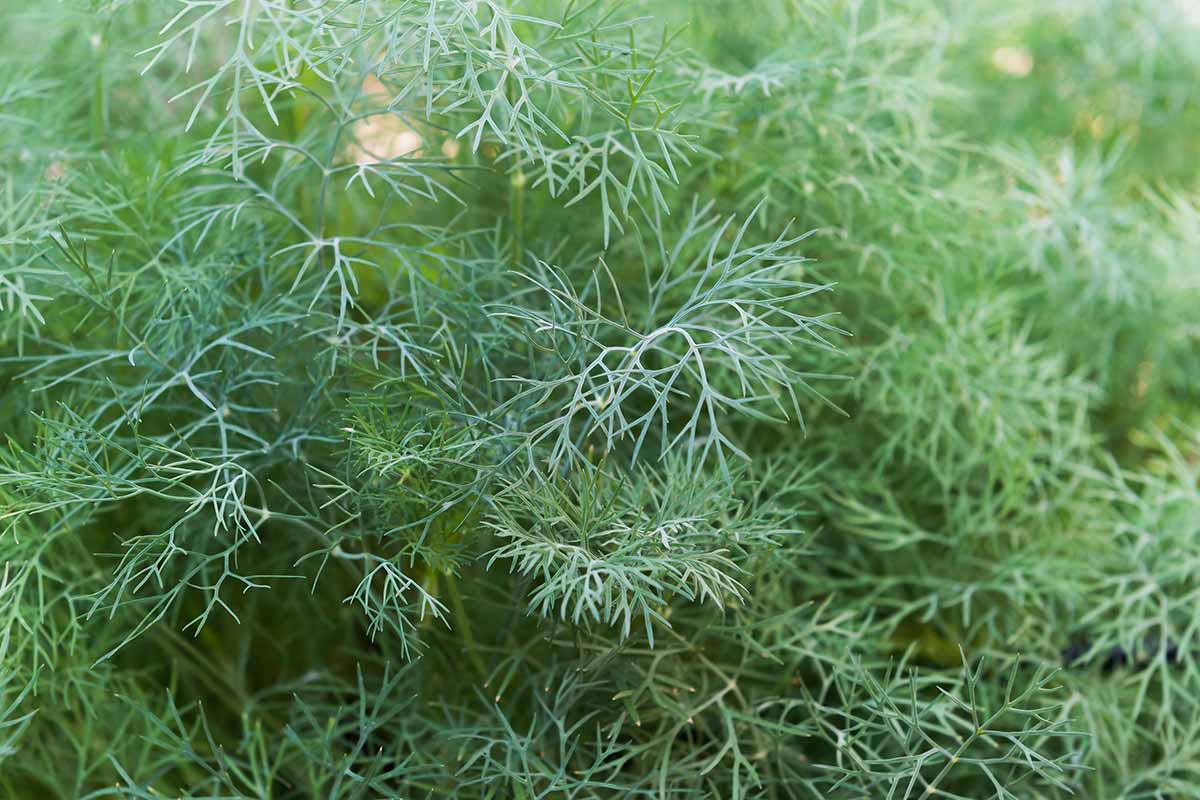
With so many varieties available, there’s something for you, whatever your goals.
Are you growing dill in your garden? What variety have you chosen? Let me know in the comments below!
And for more information about growing herbs in your garden, check out the following guides next:
- How to Start Your Own Herb Garden
- Spring Care Tips for Your Herb Garden
- 9 Fast-Growing Vegetables and Herbs to Pep Up Your Pantry Menu
© Ask the Experts, LLC. ALL RIGHTS RESERVED. See our TOS for more details. Product photos via Burpee, Eden Brothers, Frozen Seed Capsules, True Leaf Market, and Ukrainian Real Seeds. Uncredited photos: Shutterstock. With additional writing and editing by Clare Groom and Allison Sidhu.
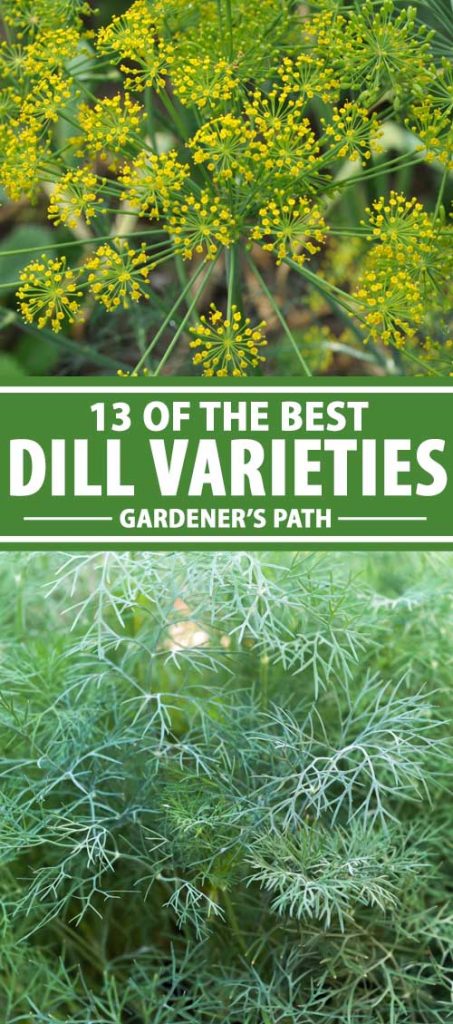
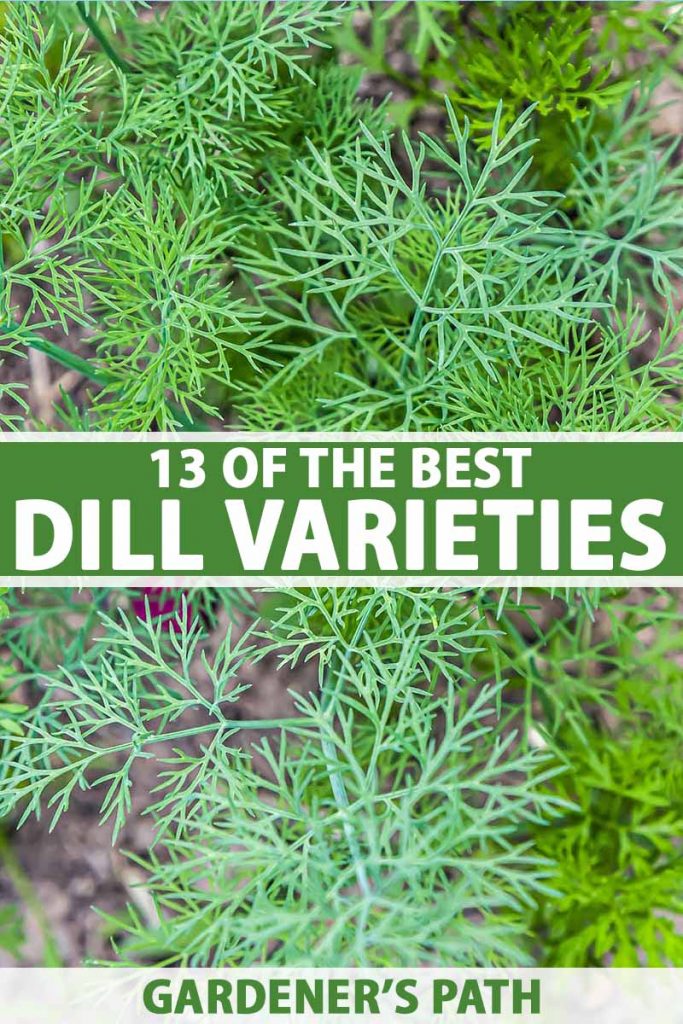
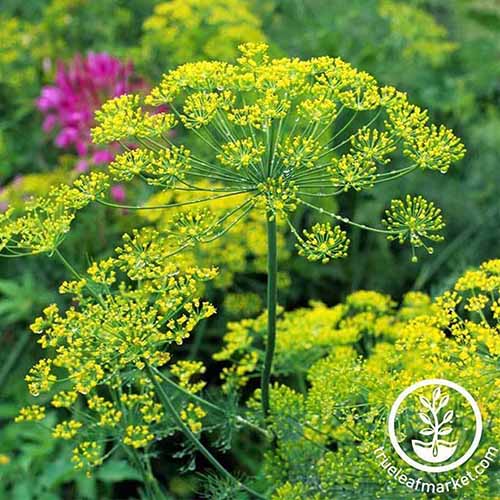
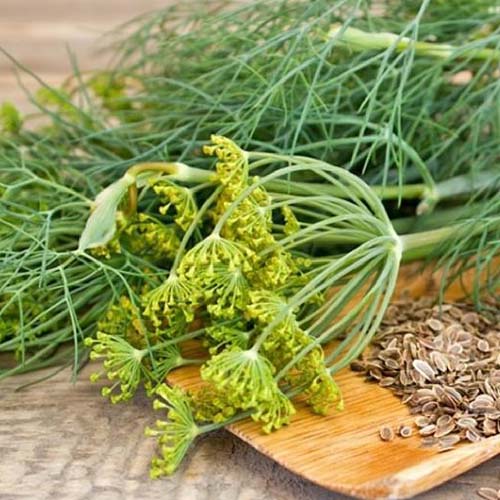

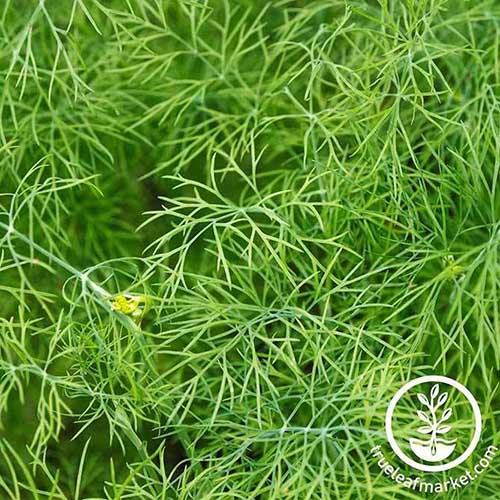

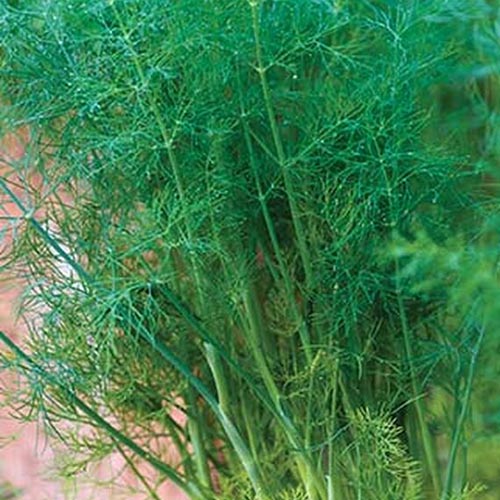
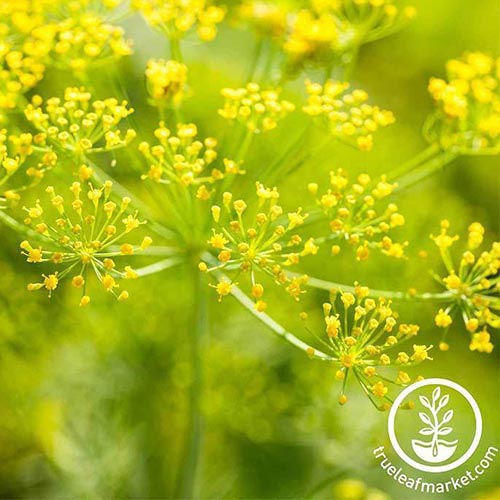
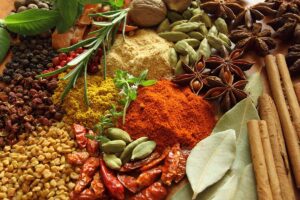
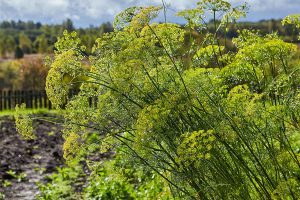
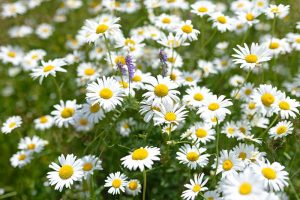
My dill doesn’t flower so that must narrow down the type it is. I cant figure out the type.
All types of dill actually will bolt and eventually flower, if you let them continue to grow for a long enough period. Frequent harvests will keep it from flowering, since you are pinching out the buds that eventually bloom. Feel free to share a photo if you’re looking for help with identification.
I grow dill in large containers for black swallowtail caterpillars. I usually grow ‘Mammoth Long Island’ because I can buy the seeds 5 or 10 for one dollar. This year it’s all bolted and I am out of dill already. I usually have some til September. Next year I will grow some of the slow-bolt varieties you’ve mentioned.
That’s too bad, hopefully some of the other varieties will last longer for you next year. Good luck!
Thanks for sharing..as an editorial note: changing the numbered list to a bulleted list would be better (so it doesn’t appear that you’re ranking the varieties).
I want a variety that is going to be the strongest flavor for making breads and biscuits. I tried Hera and Dukat and yhe flavor was weak at best. It could have been the soil but the flavor was almost non existent. What should I try for strongest flavor?
Interesting, I’ve always found ‘Dukat’ to be incredibly pungent. ‘Bouquet’ is a popular type and one that you often find in grocery stores, so if store-bought dill is to your liking, you might try that.
I’d also look at your growing set-up. Are plants receiving ample sun? You might also want to reduce fertilizing if you’ve been feeding your dill, since that can reduce flavor.
I also live in Utah and would like to grow dill to flavor salad dressing and to dry for use throughout the year. Do you have a variety you could recommend? I am growing a variety from seed that I bought at one of the box stores and I do not know the variety. Thanks in advance. It’s ok but I would like more leaves and slower bolt.
I just received my package of 17 herbs. Dill is my first interest. It is bouquet dill and that is what caused me to do a search. Now I know that there is so much more out there. It’s so exciting. I love herbs. Can’t wait to try these. I am starting in a hydroponic indoor container my husband gave me for Christmas.
How exciting, Bonnie! Best of luck with your hydroponic herb garden. Should be fun! Be sure to come back and tell us which one ends up being your favorite if you do some experimenting.